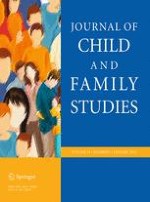01-01-2015 | Original Paper
In the Convergence of Ethnicity and Immigration: The Status and Socio-ecological Predictors of the Self-Concept of Recent Chinese Immigrant School-Age Children in Canada
Gepubliceerd in: Journal of Child and Family Studies | Uitgave 1/2015
Log in om toegang te krijgenAbstract
With the convergence of recent immigration and an ethnic minority, Chinese children residing in a Western country such as Canada may be doubly disadvantaged for the development of self-concept. This study investigated the status and the socio-ecological predictors of the self-concept of recent Chinese immigrant children of school age who were living in Canada. Socio-ecological predictors were hypothesized to be the current classroom environment and the family’s heritage cultural beliefs. Child scales measuring self-concept and classroom environment were administered to 202 children, aged 8–13 years, who comprised Chinese immigrants (n = 112) and Caucasian non-immigrants (n = 90). Their parents completed a measure of cultural beliefs. The results showed that the immigrant children scored lower in all domains of self-concept than did the non-immigrants and all but one of the domains of self-concept were differentially predicted by the classroom climate and the cultural beliefs in both groups. Implications for practice and research are suggested.
